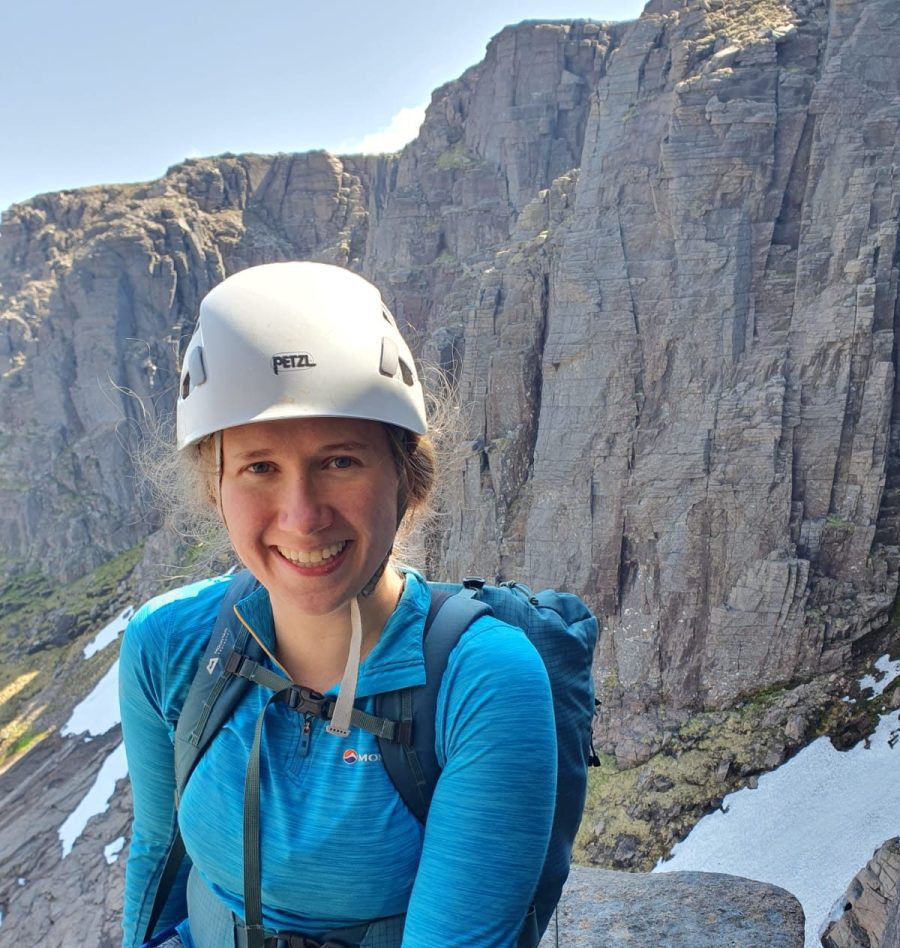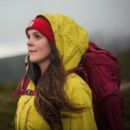Phoebe Sleath didn’t “grow up outdoorsy” and can recall many days resolutely remaining inside rented family holiday cottages on Arran and in Lakeland. Now, it’s hard to imagine the 27-year-old climber and hillwalker was ever more at home on the sofa than the crags and corries of our high places. The tide turned in her teenage years on a sunny Gold Duke of Edinburgh day on Pen y Fan. Here, her love of nature and landscape was born.
Main image: On Savage Slit in the Cairngorms | Credit: Phoebe Sleath
Now a Mountain Leader and keen artist, Phoebe is now studying for a PhD in Structural Geology in her adopted home of Aberdeen, where the Munros are only a hop, skip and jump away. Here, she can look at how thrust faults form in the mountains when continents collide and rocks are sliced, stacked, and folded. Phoebe tells The Great Outdoors how drawing the landscape – and the female climbers she admires – has helped her understand this space and how we commune within it more intimately.
TGO: Can you recall your formative experiences in the outdoors?
Phoebe: Growing up I wasn’t outdoorsy or sporty, and despite much encouragement I remember staying in our holiday cottage as much as possible on family trips to Arran and the Lake District. But a successful Gold D of E expedition in sunny weather and friends meant that a day on Pen Y Fan swiftly turned the tide. A quick trip up Blà Bheinn on Skye in the chilly summer rain and cloud didn’t put me off.
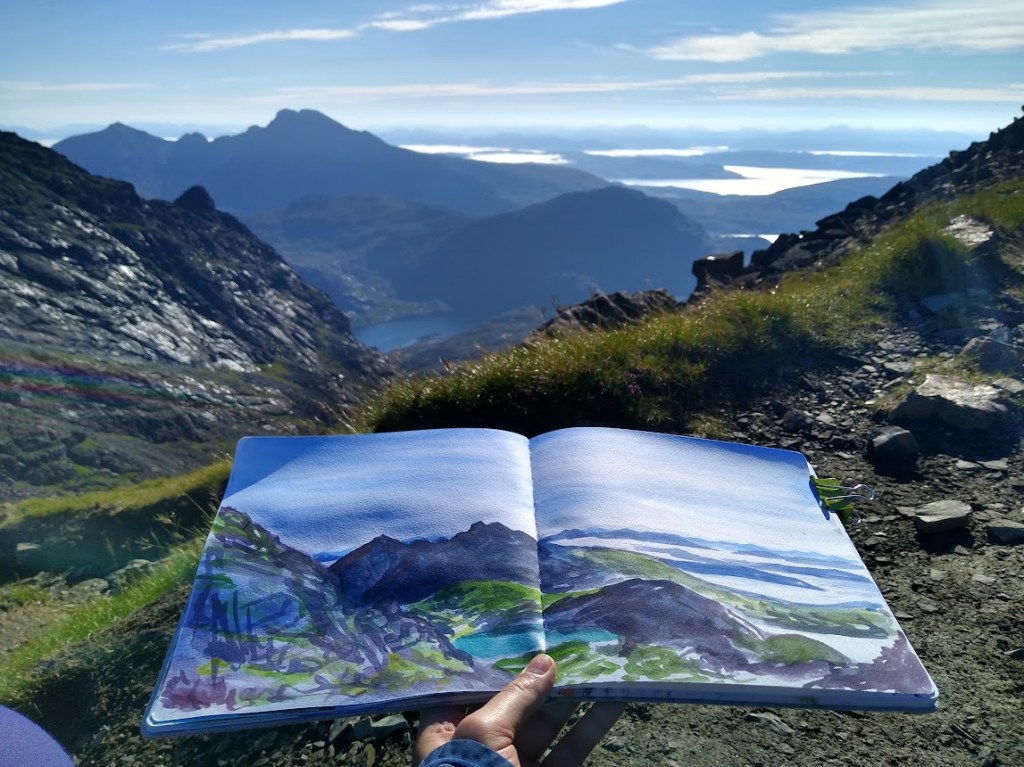
Bla Bheinn. Credit: Phoebe Sleath
When I arrived at university in 2016 I decided I didn’t want to be a choral singer anymore and signed up for the outdoorsy clubs. Moving to Scotland was an obvious choice for me after four years exploring England’s hills (and it was the only PhD I got!)
TGO: When did you first become fascinated with mountain landscapes and their geology?
Phoebe: I think that came with the love of nature. Because I enjoyed my D of E expedition my mum suggested I take geography and geology at A Level. I was a bit overwhelmed when I started university by how maths driven the course was and was close to switching subject, but I shocked myself on the first field trip when I realised how visual some parts of geology are.
This got me into structural geology which is the study of how rocks are deformed after they are first formed and often is strongly reflected in the geomorphology of landscape. After that, every time I went to the hills I started to be able to read the secret language of the history of the landscape.
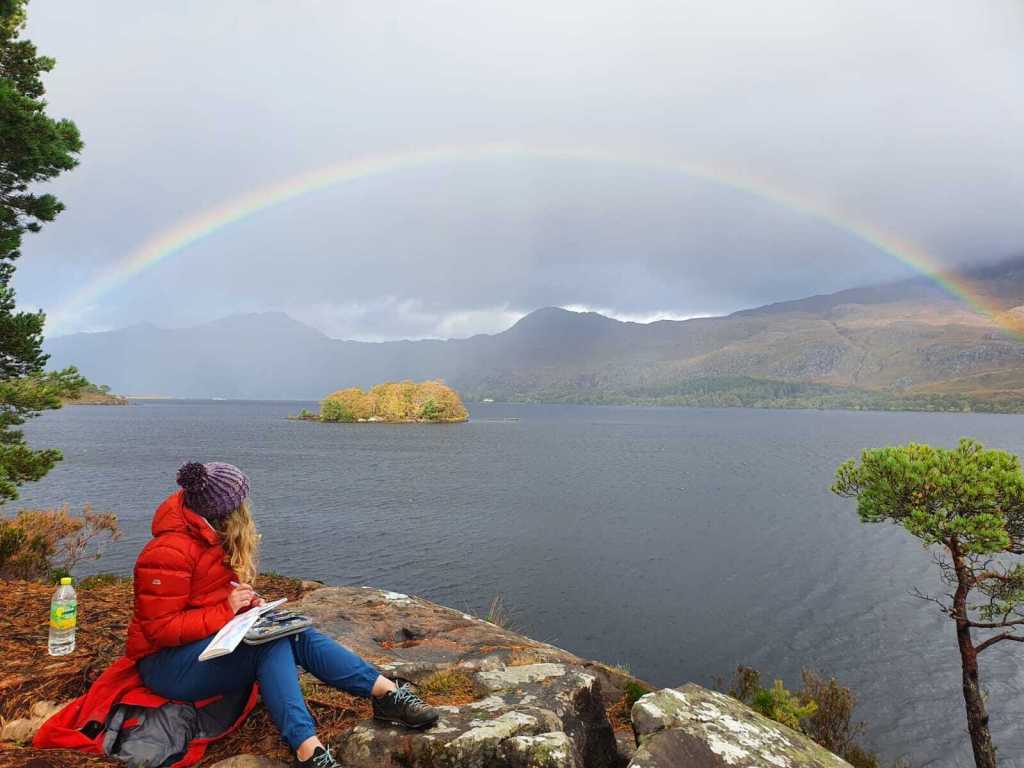
Painting on Loch Maree. Credit: Phoebe Sleath
TGO: Could you sum up your PhD research?
Phoebe: When continents collide, the rocks get forced upwards and create mountains. The rocks get moved by slicing, stacking, and folding. The slices are called thrust faults and we have a few different models for how they form, some of which are better known and used when interpreting data for subsurface engineering like nuclear waste disposal.
My project was initially based on providing support for alternative models with outcrop studies, but I’m also expanding to think about how we observe and communicate these outcrops and our understanding through images and words.
TGO: Did you always draw and paint outdoors or did this begin through documenting your scientific work?
Phoebe: When I was on my first PhD fieldwork site in Pembrokeshire I would sit by my outcrop and wait for the tide to go down with my watercolours. Through this I started painting the rocks and realised that I was documenting important scientific data through the art.
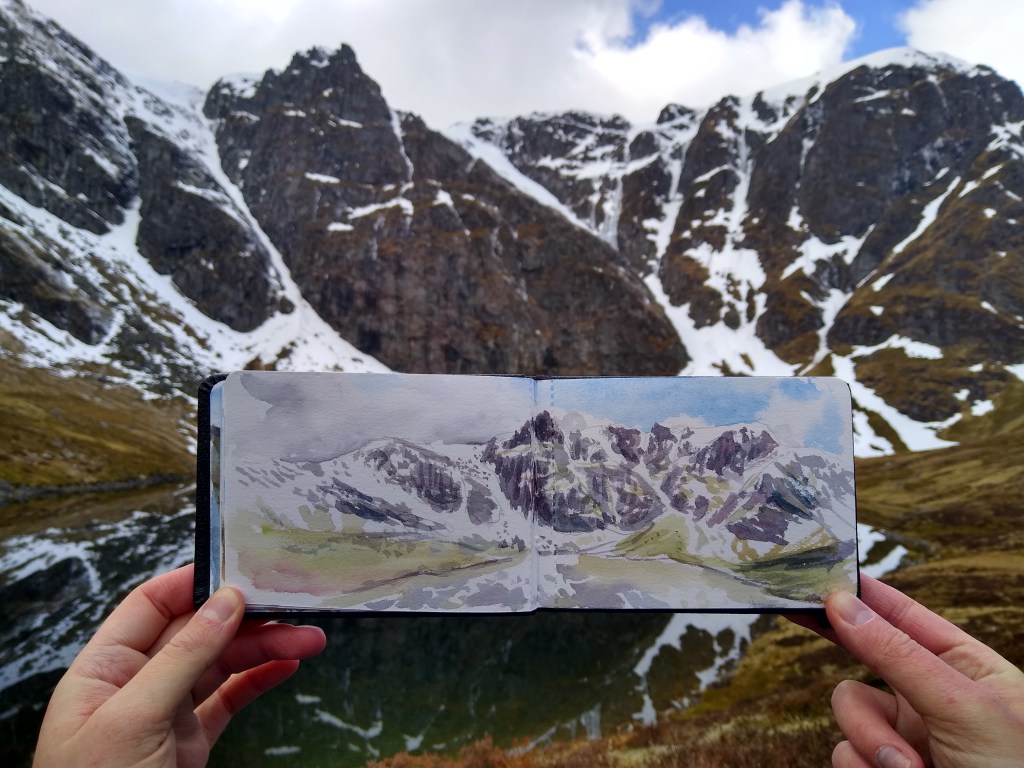
A field painting of Creag Meagaidh. Credit: Phoebe Sleath
Science is inherently creative because it is the documenting of information from the perspective of an observer, this is especially key for natural sciences documenting landscapes as there is so much noise on an almost infinite scale. We choose what we want to observe and how to document it. This uses so much more of our experience and reveals so much more of our biases than some like to think!
TGO: Can you describe the artistic process and how this helps you understand and appreciate the natural space around you?
Phoebe: When I am sketching outside, we stop for lunch and I’ll arrange myself with what I consider the best view, then I just start painting – starting with the sky and working in layers in between sandwich bites. The time pressure means I start painting straight away and don’t have time to overthink. I don’t see the painting before it’s made, it just works itself out on the page as I focus on different aspects of each layer – sky, hills, rocks, shadows. After a painting I always feel the world around me differently. I love having my sketchbooks, adventure albums.
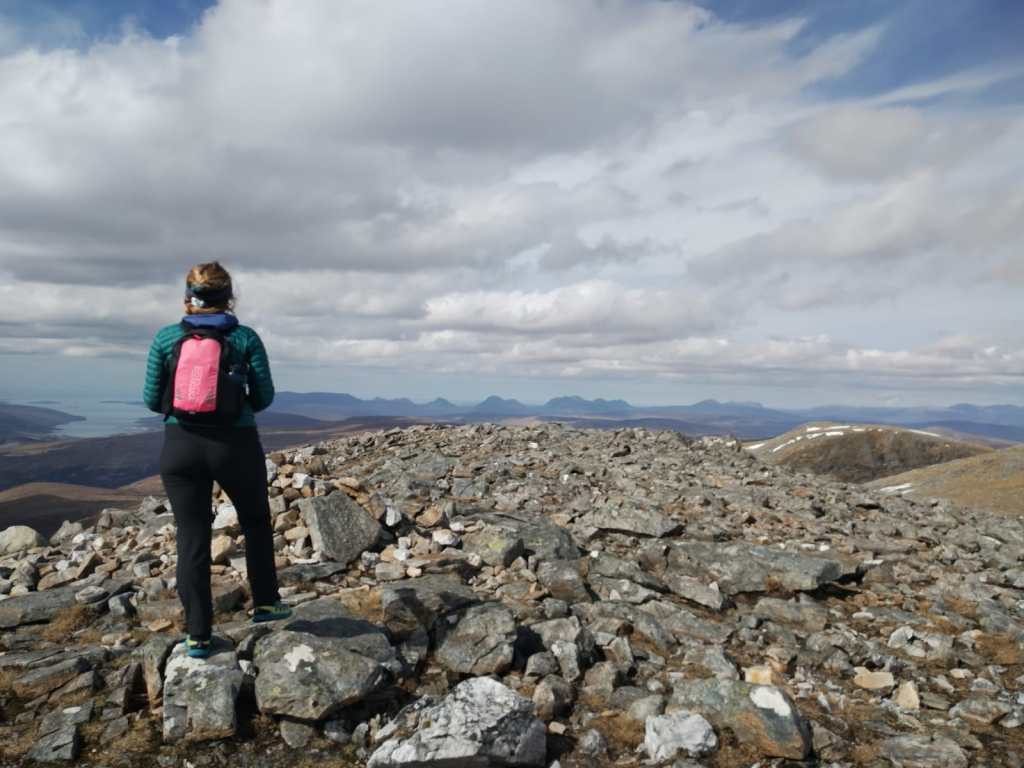
Looking towards Assynt. Credit: Phoebe Sleath
TGO: It’s not just landscapes that feature in your artwork, but people too – and you’re a qualified Mountain Leader. Can you describe your journey into leading others through our outdoor spaces and how important it is to consider how we as human commune with the environment?
Phoebe: Leading came very quickly into my outdoors journey through university clubs. I was on club committees and sharing skills is integral to the club mechanism. Doing my ML was a natural progression to that. I never really go places solo, as to me being with friends is such an essential part of my day and I get enough time to myself in other ways.
I love hearing about people’s journey in the outdoors, the confidence and improvement in mental health is so key, but also it can be a difficult and fragile experience. I really struggled with my journey into climbing, and now I’m on such a better path I feel passionate about helping others. I’ve also done my Winter ML Training and am going to slowly work towards my assessment. I’d like to do my Indoor Climbing Instructor as well.
I really enjoy painting women climbing as part of that passion, and to highlight women in the winter climbing community. When there’s so many photos of men winter climbing, I really struggle to get reference photos of women. But it’s also a way of putting my own thoughts on our bodies, reality, morality, and time on the page.

Phoebe’s painting of the climber Anna Wells, as captured initially by the photographer Jottnar. Credit: Phoebe Sleath
TGO: Can you tell us a little bit about your own personal adventures? Where do you feel most alive?
Phoebe: This changes all the time, and I feel like chapters of my life outdoors are such exciting progression. This summer I’ve focused on climbing at single-pitch crags around Aberdeenshire as I’ve just started leading. I really miss days in the hills and hopefully will do more multipitch next year! My favourite part of Scotland is anywhere in the North West Highlands, and my partner and I had an incredible day on An Teallach this summer. Whenever I’m doing sport or painting I feel so alive because moving our bodies is so creative and confidence is so graceful. I think of climbing a route as a dance that everyone has their own version of across time.
I bought a mountain bike this year and had a great time at the Limitlass festival in Glen Tanar. I do love going for a dip in the sea as well, but I’m a bit of a wimp when the waves are big. I’d like to get into sea kayaking, I’ve been really loving exploring the Aberdeenshire coast through climbing and it would be lovely to get a different >> perspective on the cliffs and coastline.
Follow Phoebe Sleath’s adventures at phoebe.sleath.co.uk and @phoebepaintsrocks.

